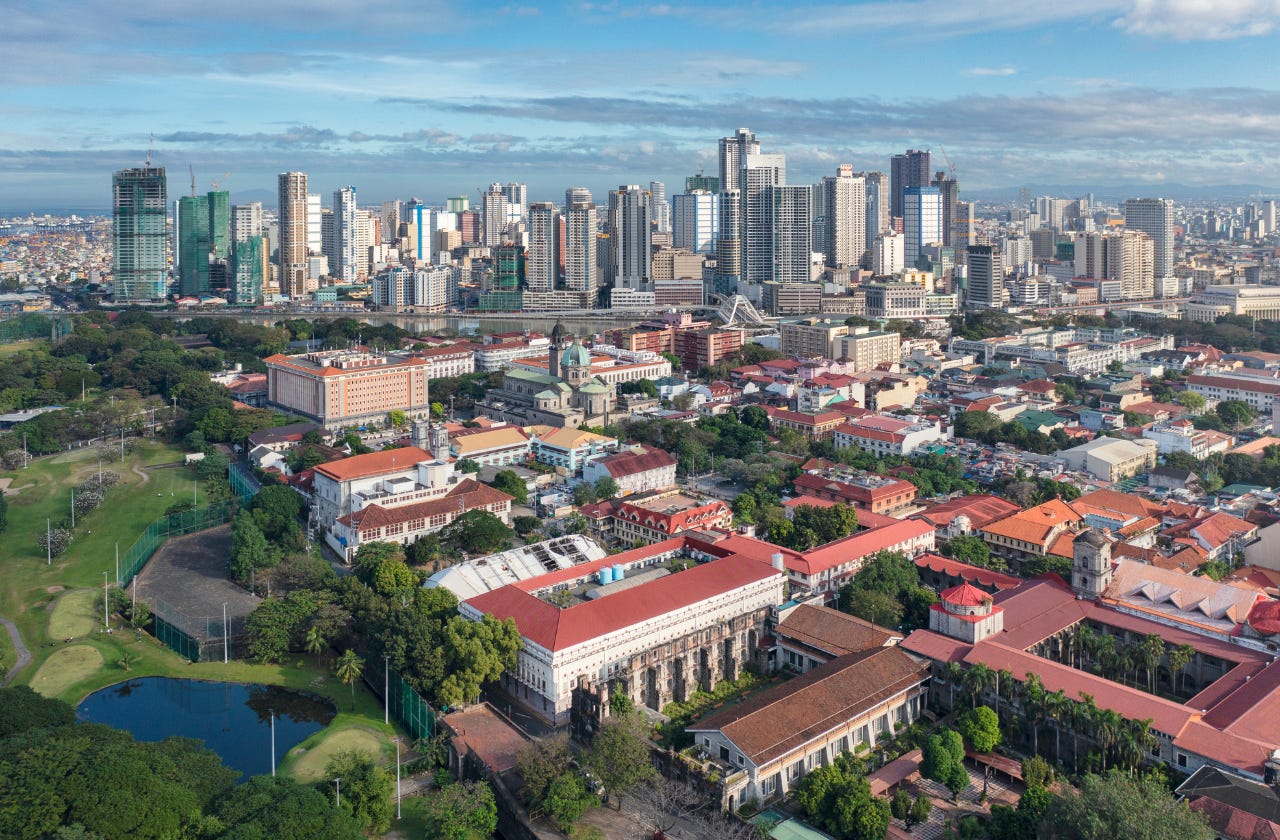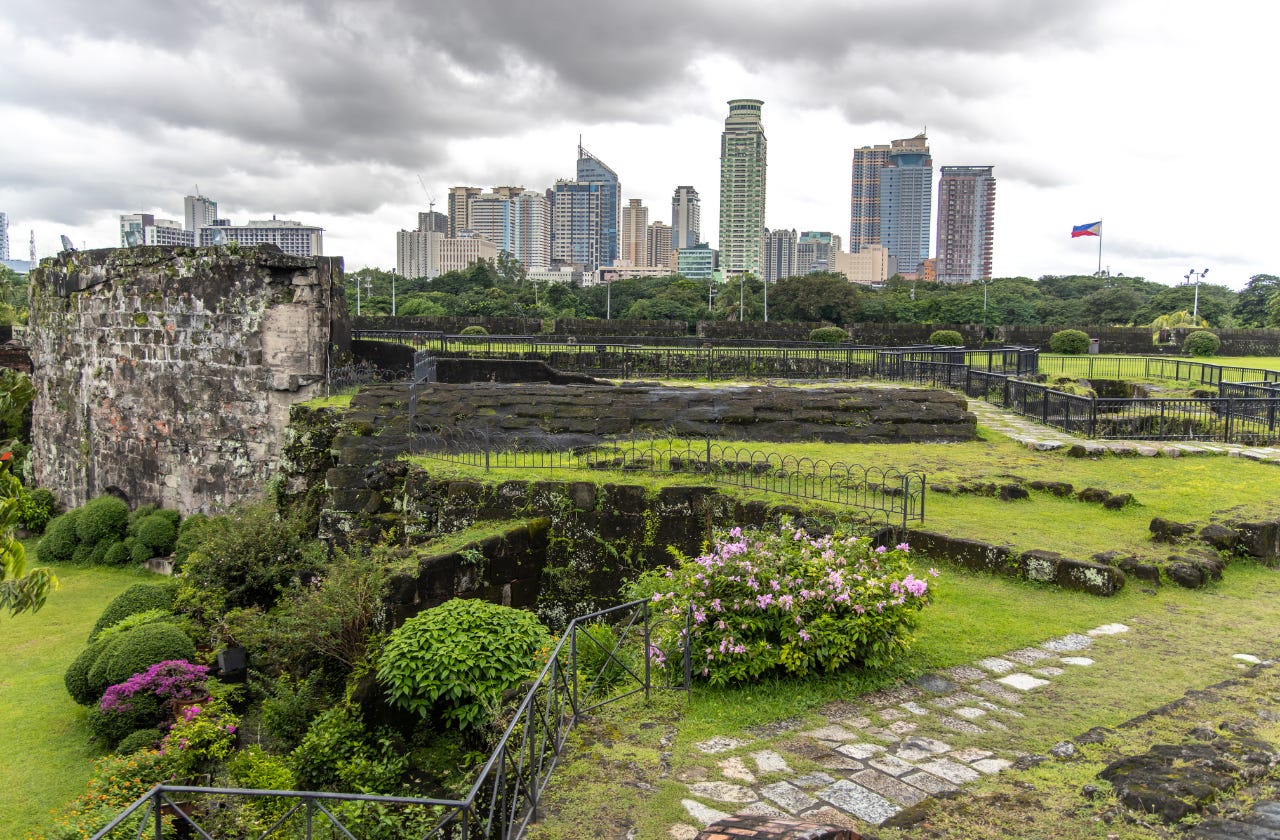Intramuros
Step into the walled city that shaped the heart of Manila and preserved the pulse of a nation's heritage.
In the center of the national capitol lies a historic center which saw numerous events and the development of a unique culture. This small district called Intramuros, is a treasure trove of historic significance for the Philippines.
This place is a testament to battles, regime changes, invasions, and important events that have occurred in the past. It was where the ancient pre-colonial bayan of Maynila once stood and where Rajah Sulayman once had his impressive wooden fort, which was then replaced with the current stone fort surrounding the historic neighborhood, then becoming the center of the Spanish Empire in Asia.
Intramuros has endured invasions from the Wokou pirates, the British, the Americans and the Japanese and withstood major earthquakes that caused devastation but also shaped the neighborhood into what it is today. While many Filipinos view Intramuros as a place they go to on at least one school field trip, it is also a spot that holds significant cultural weight, where tangible evidence of Filipino history still very much stands despite wars, earthquakes, and a rapidly modernizing country.
Architecture
Intramuros is one of the prime spots in the Philippines to see Filipino architecture that developed during the Spanish colonial era. It was here that Austronesian, Spanish, and Chinese architectural traditions came together to create a uniquely Filipino style of architecture that could withstand earthquakes and typhoons.
One example is the San Agustin Church, a UNESCO World Heritage Site that was built in the Earthquake Baroque style and completed in 1607. It is the oldest standing church in the Philippines, and exemplifies the mixing of cultures, the grandeur of Baroque art, and the sturdiness against natural disasters and tumultuous periods of history.
The current structure saw the British invasion of Manila, as well as the 1945 Battle of Manila which saw widespread destruction of Intramuros and the rest of the city. Many historians consider Manila as one of the most devastated Allied cities in World War II, second only to Warsaw, Poland. The church stood its ground after all of that, and is today one of the main sites in the neighborhood.
Another example of the blending of architectural traditions is the Bahay na Bato (house of stone), seen in the Casa Manila museum adjacent to the San Agustin Church as well as in other houses in this block. While the construction of these buildings are a lot more recent, they were built to reflect the styles of specific time periods, with the Casa Manila being a replica of an 1850s home of the urban elite.
Fort Santiago is another famous landmark in Intramuros that exemplifies stone architecture built during the Spanish colonial period. The iconic gate was built around 1714, and was renovated and rebuilt over the years following earthquakes and wars.
Much of the city walls, gates, and fortifications from the 16th to 18th centuries are still around, such as the Baluarte de San Diego from 1587, the Puerta Real built in 1663 and rebuilt in 1780 after the British invasion, the Puerta del Parian in 1593, and the Puerta de Santa Lucia in 1603.
Intramuros During the Spanish Period
Following the conquest of Maynila and the takeover of Rajah Sulayman's fort, Intramuros became the administrative and cultural center of the Spanish era Philippines. It was here that many Catholic orders built churches, where officials of the colony and Spaniards in the country resided, and where the oldest universities of the country were founded.
There were historically seven grand churches within the walls. Today, only three remain, one of which now serves as a museum rather than a functioning place of worship. The Manila Cathedral was rebuilt in 1958 but has undergone many reconstructions and remains an important part of the Catholic faith as the church of the Archdiocese of Manila.
The University of Santo Tomas was founded in 1611 within the walls and other universities such as San Juan de Letran, Mapua, and Ateneo established campuses in the city. The Governor General of the Philippines resided in the Palacio del Gobernador, which sits in the Plaza de Roma - the same plaza as the Ayuntamiento de Manila (city hall in the Spanish era but now houses the Bureau of Treasury) and the Manila Cathedral.
Activities
As a cultural center, Intramuros is one of the best places in Manila to take in Filipino history and culture. The Casa Manila museum showcases how an upper class principalia family in the 19th-century would’ve lived in Manila, with authentic furniture and artwork from the time period. The Museo de Intramuros in the rebuilt San Ignacio Church features the ecclesiastical heritage of Manila, with 18th century santos, retablos, and other religious art.
The Bahay Tsinoy features the history of Chinese-Filipinos, showing how Chinese migrants to the country have contributed a lot to the archipelago since the pre-colonial period. The Bagumbayan Light and Sound Museum details the life of national hero Jose Rizal. While there are many guided tours around Intramuros, Bambike tours are unique in that they allow visitors to ride on bamboo bikes on a guided tour around the historic center.
While old stone walls and Spanish-era churches may be the first things that come to mind at the mention of Intramuros, one should also remember that it’s the beating heart of Manila’s storied past. Its cobbled streets whisper of colonization, war, resilience, and rebirth.
Today, it stands as a heritage site and as a living monument to Filipino endurance and identity. A walk through Intramuros is a journey through the soul of the Philippines and one you should take if you are in Manila. Whether you're tracing the footsteps of history or simply soaking in the atmosphere, it’s going to be worth your while.









